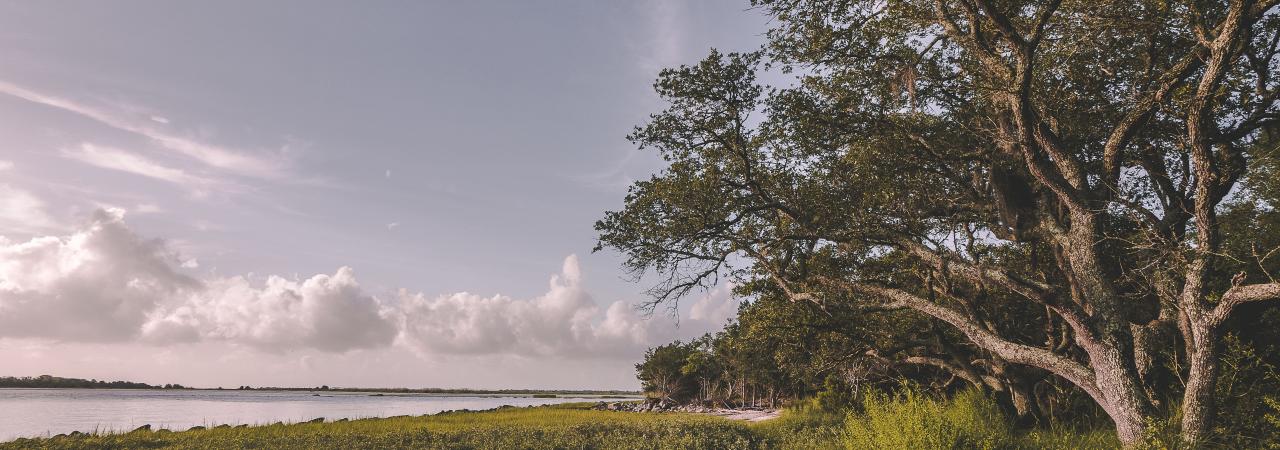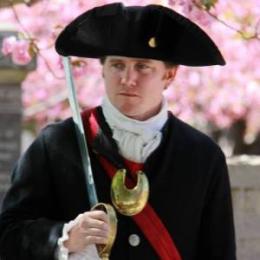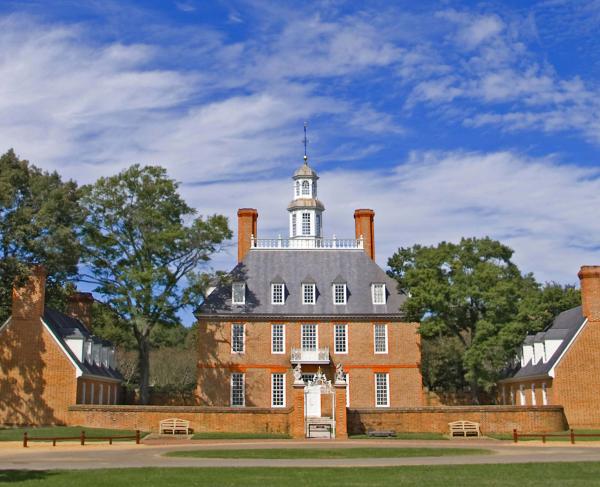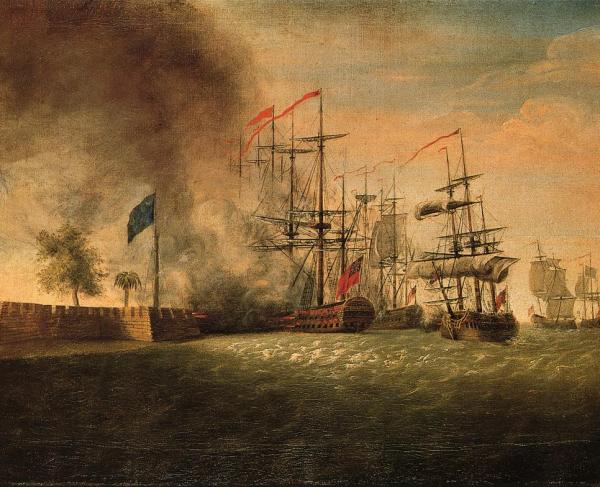
The remnant lands of Fort Johnson, S.C.
Fort Johnson was the primary colonial-era fort guarding Charleston Harbor. Situated at the northern part of James Island on the southern side of the harbor, a fort has existed near this spot since at least 1708. The need for a fort to guard the harbor was apparent after a combined Franco-Spanish invasion failed to capture Charleston in 1706 during Queen Anne’s War. It was named for the colonial royal governor at the time, Nathaniel Johnson. The fort was largely enhanced in 1759 during the French and Indian War.
The fort was built of tabby, similar to concrete, made from oyster shells and lime. The fort saw little action until the beginning of the Revolutionary War. In September of 1775, South Carolina soldiers under the command of Patriot Colonel William Moultrie rowed to Fort Johnson and took over the fort. Moultrie raised above the fort, for the first time, the South Carolina liberty flag. This blue flag was a white crescent in the upper left-hand corner, symbolizing the second-born sons of the British who largely settled the Americas. A version of this flag with a palmetto tree still serves as the state flag of South Carolina. Under the care of the South Carolina troops, the fort was reinforced with palmetto tree logs. The fort saw no action during the 1776 Battle of Sullivan’s Island. 1779, British General Augustine Prevost led an army toward Charleston from Savannah, Georgia. South Carolina troops destroyed the fort and abandoned the site to defend the city of Charleston from the peninsula. After Prevost’s army withdrew, Sir Henry Clinton and a British army returned to lay siege to the city the following year. Once again, Fort Johnson was abandoned, and the British occupied the location until 1782. In November 1782, the American Revolution's final battle with British soldiers occurred near Fort Johnson at Dill’s Bluff. The next month, the British evacuated the area, and South Carolina retook the fort.
On May 5, 1791, President George Washington took a boat trip to Fort Johnson with General William Moultrie while visiting Charleston. Washington wrote that he “visited the works of Fort Johnson on James’s Island . . . “ He noted that the fort was “in ruins” and “quite fallen.”
Fort Moultrie on Sullivan’s Island became the primary fortification in the harbor. A brick fort was built there in 1809, and then in 1829, the government began building Fort Sumter on a sandbar in the harbor. Fort Johnson saw little service in the intervening years until the beginning of the American Civil War.
In 1861, South Carolina soldiers took over Fort Johnson after the United States soldiers under the command of Major Robert Anderson moved from Fort Moultrie to the still incomplete Fort Sumter. The South Carolina soldiers built the fortifications at Fort Johnson and placed cannons and mortars on the site aimed at Fort Sumter. By April 1861, South Carolina had joined the Confederacy, and Abraham Lincoln had been inaugurated President of the United States. Lincoln dispatched an armed fleet to resupply Anderson’s command at Sumter, which was on the verge of running out of supplies. In response to this resupply effort, Confederate President Jefferson Davis ordered the men in Charleston harbor to demand the evacuation of Fort Sumter and if to “reduce” the fort if they refused to leave. A final ultimatum was given to Major Anderson in the early morning hours of April 12, 1861. When Anderson stated that he would evacuate the fort on April 15 unless he were reprovisioned, the Confederates told him they would open fire on the fort in one hour. The delegation of Confederates rowed to Fort Johnson, where the order to fire the first shot was given. Offered initially to Virginia Congressman Roger Pryor, he refused to fire the first shot. Thus, Captain George S. James ordered Lieutenant Henry S. Farley to fire on Fort Sumter. Lt. Farley pulled the lanyard of the 10-inch mortar. The mortar shell arced across the harbor and exploded over Fort Sumter. This was the signal shot to let all the other batteries in the harbor open fire on Sumter. Thus, Fort Johnson at Fort Sumter fired the first Civil War. Edmund Ruffin of Virginia was the man most often associated with the first shot. The 67-year-old secessionist was posted on nearby Morris Island with the Palmetto Guard. He fired the first shot after this signal, and his was the first shot to hit the brick fort.
Confederate troops actively used Fort Johnson throughout the Civil War. As the Union laid siege to the city and harbor, at least one attempt to land troops at Fort Johnson was made in 1864 but was repulsed. On February 17, 1865, as Union troops moved up through the interior of South Carolina, Confederate forces evacuated Fort Johnson and the other forts in Charleston harbor.
In 1970, most of Fort Johnson was transferred to the South Carolina Wildlife and Marine Resources Department. Today, the old fort's only remains are cisterns and a colonial brick powder magazine. A plaque on the powder magazine denotes the site’s importance as the place where the first flag of liberty was raised, and a nearby stone marker denotes the location of the first shot of the American Civil War. Today the site offers great views of downtown Charleston and the entire harbor.
Related Battles
5,506
258
685
204


